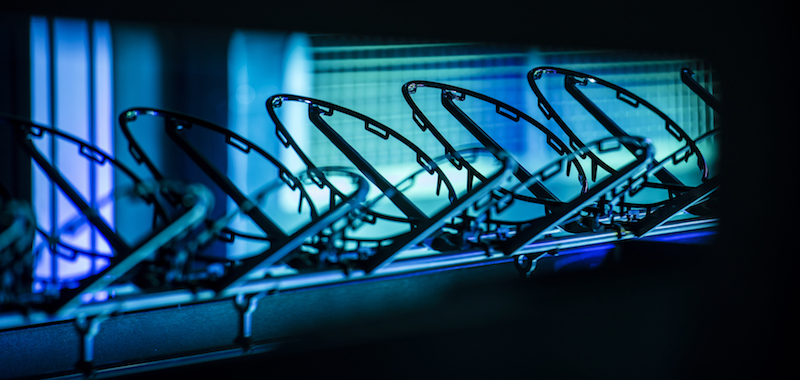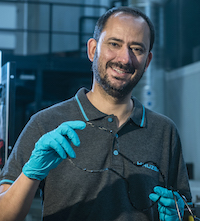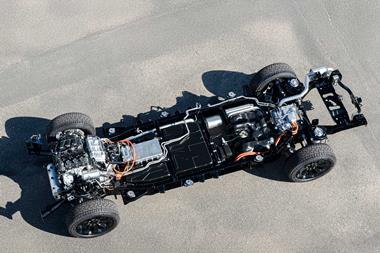Coatings specialist Hauzer has developed a viable physical vapour deposition process for automotive parts
 The chrome electroplating process for vehicle parts is tried and tested; it’s durable and can be polished to a high shine but uses potentially harmful chemicals, notably chromium 6. A challenge to its use has arisen in the form of EU environmental legislation. One of the aims of the REACH legislation is to reduce the use of hazardous materials in industrial processes where the health of people or the environment is at risk. As such this will impact on the use of electroplating for chrome parts, so in recent years an alternative has been sought and Hauzer believe they have the solution.
The chrome electroplating process for vehicle parts is tried and tested; it’s durable and can be polished to a high shine but uses potentially harmful chemicals, notably chromium 6. A challenge to its use has arisen in the form of EU environmental legislation. One of the aims of the REACH legislation is to reduce the use of hazardous materials in industrial processes where the health of people or the environment is at risk. As such this will impact on the use of electroplating for chrome parts, so in recent years an alternative has been sought and Hauzer believe they have the solution.
The company claims its Cromatipic process avoids the issues arising from the use of chromium 6 and offers some advantages over plating, painting and other Physical Vapour Disposition (PVD) methods used for coating decorative automotive plastics. Hauzer’s system uses two layers to create a bright or matt/satin chrome finish on the plastic parts. The first is a UV cured lacquer, which acts as a base coat. Then a sputtered chrome PVD coating is applied. The company noted that due to the absence of Ni and Cu there is no risk of corrosion and that the thin layers of coatings makes it flexible.
PVD technology is not new and Hauzer has been supplying its Cromatipic process for a number of years but earlier this year the company opened a production plant in Barcelona, Spain to offer customers a working example of a turnkey production system.
In advance of the opening ceremony for its new competence centre the company hosted a forum with speakers from a number of OEMs and tier suppliers who discussed the challenges in finding an alternative to the established chrome electroplating process.

The practical challengesDiscussing this issue Klaus Münker, manager Innovation Product & Process Development Exteriors Europe, Magna Exteriors, cited an example of attempts to use alternative coating processes: “We had a project from VW to produce a coloured chrome plated front grill and side body trims for the Passat. Magna applied the chrome coating then we used an external supplier, Ionbond, to apply the coloured layer. This worked from a technical point of view, meeting the customer’s specifications, but due to the low volumes for this [trim option] it proved to be too expensive on a per part cost.”
Münker added: “There are still challenges for PVD chrome plated plastic parts, especially those used on the vehicle exterior. Abrasion is a problem which is made worse if a clear topcoat is used (Hauzer’s Cromatipic doesn’t use one) as this has a mirroring effect reflecting any scratches in the clear-coat in the chrome layer beneath it.”
SEAT’s Francisco García Jimenez, explained that the OEM has been testing a number of alternative processes to replace the use of chromium 6, but the challenge has been finding processes that meet the criteria for durability, appearance and cost across a number of applications.
Jimenez noted that the plan was to utilise a number of different coating technologies to replace electroplating rather than single option: “SEAT doesn’t see a single alternative to cover all applications but we will use the best solution on an application-by-application approach.”
Iberica Cromatipic competence centreOur guide around the facility, Jaume Amigo, Technical adviser to the board and one of the original developers of the Cromatipic process, explained that there are four process stages: CO2 cleaning, lacquer application, UV curing, PVD coating.
At the start of the line the supplied trim parts (for the instrument panel on the new Renault Captur) are manually loaded on to specially designed fixtures, while a camera vision system checks the racks are loaded correctly. Each batch is RFID tracked and each station has a PLC that controls all the parameters for the job, these are linked to a central computer controller.
Cleanliness is a high priority and one of the big challenges when painting plastic parts is the electrostatic charge that builds up and attracts dust particles that are magnified by the thin lacquer and chrome layers. Before the coating processes start the plastic components are cleaned using CO2, which freezes any contaminates making them easier to remove and leaves no residue on the part.
Once inside the enclosed production line all the processes are automated, with robots performing materials handling, cleaning and painting operations. The humidity and temperature are carefully controlled, and the air is re-circulated and cleaned. As the racks pass between cells they pause in an interlock chamber to await the next process to ensure there is no contamination being passed forward in the process.
Amigo noted that the paint process is very ‘green’ using no VOCs only a 100% solids paint [lacquer], so there’s no water consumption or effluents produced. The lacquer is applied by a 6-axis ABB robot that utilises an air-bell rotating at 50,000rpm. According to Amigo this delivers better atomisation providing a uniform coating and reducing material consumption. The lacquer contains no solvents and is cured using UV with a cycle time of 10mins.
To allow for any future expansion the production line has been designed on a modular basis making it relatively simple to add more cells/processes. As different plastic substrates will need to be coated in the future it is likely that additional preparatory processes will be needed.
The final stage the sees the cured parts transferred to the Metalliner. A robot loads the parts onto vertical PVD frames which then move through the three-chamber Metalliner utilising a maglev system. In the first chamber pumps are used to create a vacuum to millionth of normal atmospheric pressure, then the parts undergo a plasma activation treatment to ensure the adhesion of the chromium layer.
In the second chamber the parts are positioned in front of cathodes where the chromium is then applied; depending on the product the parts can be rotated if needed at this stage. The final chamber can apply a hydrophobic silicon oxide layer if requested by the customer. One the process is finished the chamber is vented to match the atmospheric conditions then the parts are unloaded by hand and subjected to a final visual inspection.
 Xavier Fernández Garcia, Cromatipic competence centre manager
Xavier Fernández Garcia, Cromatipic competence centre managerWhat challenges have there been in establishing the competence centre?XG: There were two major challenges. Firstly there was starting up from scratch with only a small team. Perhaps the biggest challenge has been combining the three different functions this plant serves. It is a job coating factory, so it has to be productive and cost effective if we are to be competitive in this market. This is also a competence centre, so we need to be flexible; this means working on new developments, colours and products. It is also a showroom for our processes and competences. This is challenging when you consider that flexibility is hard in mass production. You ideally need to be producing a lot of one product, but developing new products as a competence centre means making constant changes. So we needed to design the production line to be flexible. However, we have to be able to demonstrate our processes to exiting and potential customers so this means making processes visible and accessible to visitors, which means it’s hard to optimise the layout of the production line.
You have the space to add production capacity here should demand and volumes increase. Would you shift the focus of this facility more towards production or setup another production operation at another location?XG: No. This has been setup as the Cromatipic competence centre and we will want to continue to develop that, also we have recruited and trained personnel for this purpose and have a number development engineers here. So if we needed to increase production capacity we would perhaps invest in one of our other locations.
How is the Cromatipic process being developed?XG: It’s a never ending process as there are always new developments. We are developing new colours and working with new types of plastic that our customers want to use.
Do different paints or plastics affect the cycle time for the Cromatipic process? For example between the bright and matt chrome finishes you currently produce?XG: The takt times for the current finishes are the same but different paints and plastics that will be used in the future will have an effect on the paint curing and metal application times.
What new developments are you working on?XG: We have our current contract with Renault but we are also working on projects for PSA and Fiat. The next big development will be using the Cromatipic process on different plastics and focusing on polypropylene in particular.Because of safety and clean room conditions checking the process often happens through closed doors.




































